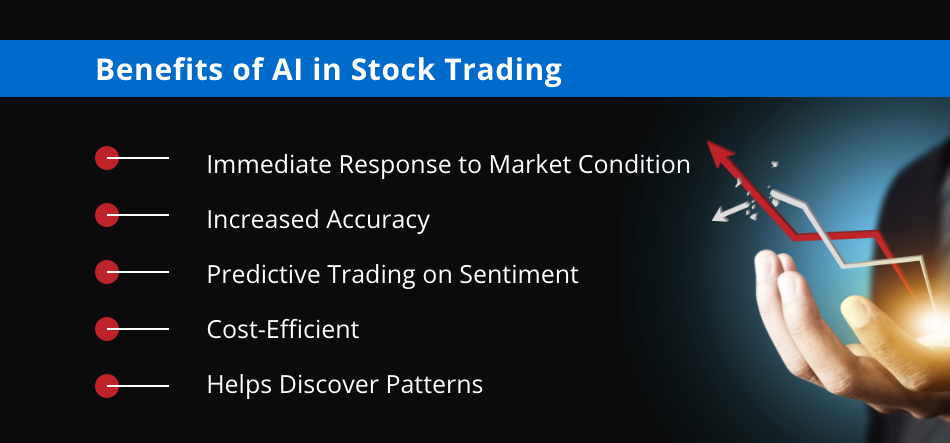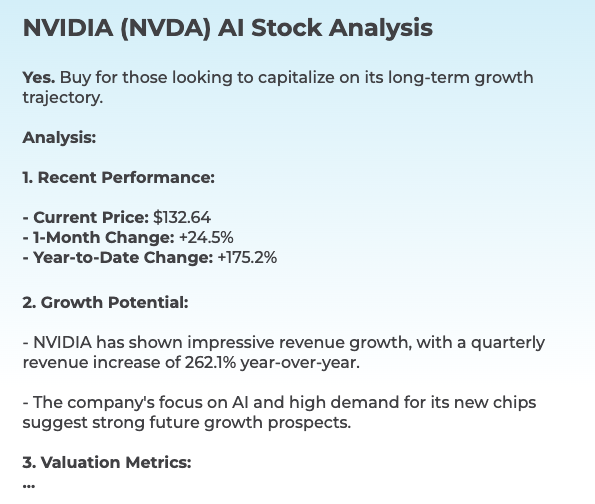20 Handy Facts To Picking AI Stock Predictions Analysis Websites
20 Handy Facts To Picking AI Stock Predictions Analysis Websites
Blog Article
Top 10 Tips To Assess The Data Sources And Quality Of Ai Trading Platforms For Stock Prediction And Analysis.
For AI-driven trading platforms and stock prediction systems to deliver accurate and reliable information it is vital to assess the accuracy of the data they use. Insufficient quality data can lead to flawed predictions, financial losses and a lack of trust in the platform. Here are the top 10 guidelines for assessing the quality of data as well as sources:
1. Verify the Data Sources
Be sure to verify the source: Make sure that the platform uses data from reputable sources (e.g. Bloomberg, Reuters Morningstar or exchanges like NYSE and NASDAQ).
Transparency. A platform that is transparent must reveal all the sources of its data and ensure that they are kept up-to-date.
Avoid dependency on a single source Most reliable platforms combine information from multiple sources to reduce biases.
2. Examine the quality of data
Real-time vs. Delayed Data: Find out if the platform is providing actual-time data or delaying information. Real-time trading demands real-time data, while delayed data is sufficient for long-term analysis.
Update frequency: Check the frequency at which data is changed.
Accuracy of historical data: Make sure that historical data is consistent and free of gaps or anomalies.
3. Evaluate Data Completeness
Find out if there is missing or incorrect data.
Coverage: Check whether the platform you are using supports many indexes and stocks that are pertinent to your plan.
Corporate actions - Determine if the platform account stock splits. dividends. mergers.
4. Test Data Accuracy
Data consistency can be guaranteed by comparing the data on the platform to other reliable sources.
Error detection: Look out for incorrect pricing, mismatched financial metrics or other outliers.
Backtesting. Strategies can be tested back using historical data and compare the results with what you expected.
5. Granularity of data can be determined
Level of detail You should find the most precise information, such as intraday volumes as well as prices, bid/ask spreads, and order books.
Financial metrics - See whether there are financial metrics in a comprehensive statement (income statements and balance sheets, as well as cash flows) and key ratios included (P/E/P/B/ROE and so on.). ).
6. Clean up and processing of data
Data normalization is important for ensuring consistency.
Outlier handling - Check out the way your platform handles anomalies, or data that is not outliers.
Missing data imputation: Check if the platform uses effective techniques to fill in missing data points.
7. Evaluation of Data Consistency
Timezone alignment align data in accordance with the same timezone in order to prevent any discrepancies.
Format consistency: Make sure the data is formatted consistently.
Check for consistency across markets: Compare data from various exchanges and/or markets.
8. Determine the relevancy of data
Relevance to trading strategy: Ensure the data aligns with your style of trading (e.g. technical analysis or quantitative modeling, fundamental analysis).
Features selection: Check whether the platform provides useful features to improve your the accuracy of your predictions (e.g. sentiment analysis, macroeconomic indicator news data).
Examine Data Security Integrity
Data encryption: Check that the platform utilizes encryption to secure data as it is stored and transmitted.
Tamper-proofing : Make sure whether the data hasn't been altered by the platform.
Security: Make sure whether the platform is compliant with the rules for data protection (e.g. GDPR, CCPA).
10. Check out the Platform's AI Model Transparency
Explainability: The platform should provide insights on how AI models employ data to produce predictions.
Examine for detection of bias. The platform should actively monitor and mitigate any biases that may exist within the model or data.
Performance metrics: To evaluate the accuracy and reliability of predictions, examine the platform's performance metrics (e.g. accuracy, precision, recall).
Bonus Tips
User reviews: Read reviews of other users to gain a sense of the quality and reliability of the data.
Trial period: Take advantage of a free trial or demo to try the data quality of the platform and features before committing.
Customer Support: Ensure that the platform provides an efficient support system for customers to address issues related to data.
These tips will help you to better evaluate the quality of data and the sources used by AI software for stock prediction. This will help you to make more educated decisions about trading. Read the recommended ai investment platform examples for site info including trading ai, ai stocks, ai stock picker, best ai trading software, best ai stock trading bot free, ai stock trading bot free, ai trade, ai for trading, ai for stock predictions, ai for trading and more.
Top 10 Tips On How To Evaluate The Scalability Ai Trading Platforms
To ensure AI-driven stock prediction and trading platforms are scalable and scalable, they need to be able to handle the ever-growing amount of data and the complexity in markets, and also user demands. Here are 10 top methods to evaluate the scaleability.
1. Evaluate Data Handling Capacity
Tips: Ensure that the platform you're considering can process and process large amounts of data.
What is the reason? Scalable platforms should be able to handle increasing amounts of data with no degradation.
2. Test the Real-Time Processing Capabilities of your processor
Test the platform to see how it handles streams of data in real time like breaking news or stock price updates.
Why: The real-time analysis of trading decisions is crucial, as delays can lead to you missing out on opportunities.
3. Check for Cloud Infrastructure and Elasticity
Tip: Determine whether the platform is cloud-based infrastructure (e.g., AWS, Google Cloud, Azure) and is able to scale resources dynamically.
Why? Cloud platforms allow flexibility. The system is able to scale up or back down according to the demand.
4. Algorithm Efficiency
Tips: Evaluate the computational efficacy (e.g. deep learning, reinforcement-learning) of the AI models used for prediction.
Reason: Complex algorithms are resource-intensive Therefore, optimizing these algorithms is vital for scalability.
5. Examine Parallel and Distributed Computing
Tips: Make sure that the platform leverages distributed computing or parallel processing frameworks (e.g., Apache Spark, Hadoop).
The reason: These advanced technologies provide faster data analysis and processing across multiple nodes.
Review API Integration & Interoperability
TIP: Examine the platform's integration with external APIs.
Why? Because the platform is able to adjust to changing market conditions and data sources thanks to seamless integration.
7. Analyze User Load Handling
Try simulating traffic volumes that are high to determine how your platform performs.
The reason: The performance of a scalable platform shouldn't be affected by the rise of users.
8. Study the Model Retraining adaptability
Tip: Assess how frequently and efficiently AI models are trained with new data.
The reason is that markets are always shifting, and models must to be able to change quickly to remain accurate.
9. Examine for fault tolerance and redundancy.
Tip - Make sure that your platform has redundancy and failover mechanisms to handle hardware or software failures.
Why? Downtime in trading can be costly, so fault tolerance is crucial for scaling.
10. Monitor Cost Efficiency
Review the costs associated with your platform which includes cloud resources, storage and computation power.
Why? Scalability should come at a price that is sustainable. This means that you must balance the performance against the cost.
Bonus Tip Future Proofing
Platforms should be designed to incorporate new technologies like quantum computing as well as advanced NLP. They should also adapt to regulatory change.
By focusing on these aspects, you can effectively assess the scale of AI stock prediction and trading platforms. This will ensure they're robust, effective, and ready for future expansion. Read the most popular can ai predict stock market blog for blog tips including ai copyright signals, chart ai trading, ai options, ai share trading, best ai stocks, ai software stocks, stocks ai, best ai stock prediction, ai for trading stocks, ai software stocks and more.